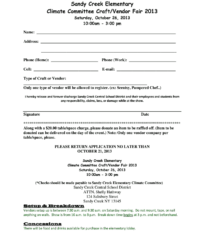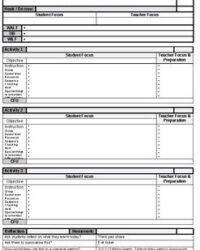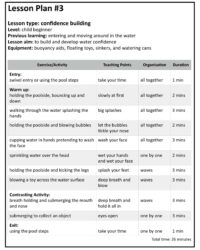Imagine walking into a classroom where every student, from the moment they sit down, understands exactly what they’re supposed to learn and how they’ll show they’ve learned it. This isn’t a far-fetched dream, but a tangible reality achievable through something called teacher clarity. When educators are clear about their learning intentions and success criteria, it creates a powerful ripple effect, boosting student engagement and achievement. It’s all about demystifying the learning process for everyone involved, making sure there are no hidden objectives or unclear expectations.
The beauty of teacher clarity lies in its directness. It moves beyond just outlining activities and delves into the ‘why’ and ‘how’ of learning. For busy educators, translating these powerful principles into daily practice can feel like a big task. That’s where a well-designed teacher clarity lesson plan template becomes an indispensable tool. It helps you systematically integrate clear learning goals and measurable success criteria into every lesson, transforming your planning from a chore into a focused, impactful process that truly benefits your students.
Unpacking Teacher Clarity: What it Really Means for Your Classroom
Teacher clarity, at its core, is about making learning visible to students. It’s not just about knowing what you as the teacher are going to teach, but ensuring students understand what they are going to learn and what success looks like. This involves explicitly communicating learning intentions (what students will know, understand, or be able to do) and success criteria (the specific standards or evidence that will show they have achieved those intentions). When these elements are clearly articulated, students become active participants in their learning journey, rather than passive recipients of information.
Why does this matter so much? Think about a time you tried to complete a task without clear instructions or a sense of the desired outcome. Frustrating, right? Students often experience this same frustration when learning goals are vague. Teacher clarity removes that ambiguity. It empowers students by giving them a clear target to aim for, reducing anxiety and increasing their sense of purpose. When students know what’s expected, they can self-monitor their progress, ask more targeted questions, and engage more deeply with the material.
Moreover, implementing teacher clarity isn’t just beneficial for students; it significantly refines your teaching practice. It forces you to think critically about the purpose of each lesson, ensuring that every activity serves a clear learning objective. This focused approach leads to more intentional instruction, more precise feedback, and a better understanding of where your students are struggling. It helps you design assessments that genuinely measure understanding against predefined criteria, making your grading more consistent and meaningful.
Ultimately, embedding teacher clarity into your daily routine fosters a culture of success in your classroom. It transforms the learning environment into a place where expectations are transparent, effort is directed towards specific goals, and achievement is celebrated through clear, shared understanding. A structured approach, like using a teacher clarity lesson plan template, can simplify this integration, making it a natural part of your planning process.
Key Components of Teacher Clarity
- Learning Intentions: What students should understand or be able to do by the end of the lesson.
- Success Criteria: How students will demonstrate their understanding or ability.
- Demonstrations of Learning: The activities or tasks students will complete to show mastery.
Benefits for Students and Teachers
- Improved Student Understanding: Students know what they are learning and why.
- Increased Engagement: Students are more motivated when goals are clear.
- Targeted Feedback: Teachers can provide specific, actionable feedback based on clear criteria.
- Reduced Workload (for teachers in planning): Streamlines lesson design with a clear focus.
Building Your Effective Teacher Clarity Lesson Plan Template
Creating your own teacher clarity lesson plan template doesn’t have to be complicated; it’s about establishing a framework that supports your teaching style while consistently incorporating the core principles of clarity. Think of it as your personalized guide for planning lessons that truly resonate with students. A good template will prompt you to consider all essential aspects, ensuring no critical element of teacher clarity is overlooked before you even step into the classroom.
Start by identifying the fundamental sections that are non-negotiable for effective lesson planning. Beyond the basic administrative details like subject, grade level, and duration, the heart of your template will lie in sections dedicated to learning intentions and success criteria. These should be prominent and easily identifiable, encouraging you to articulate them with precision for every lesson. Remember, the clearer you are in your planning, the clearer you’ll be when communicating with your students.
As you build out your template, consider adding sections for differentiation, assessment methods, and reflection. These elements ensure that your clarity extends to how you support diverse learners, how you will gauge their understanding against the success criteria, and how you will refine your approach for future lessons. A comprehensive template serves as a powerful reminder to address all facets of effective instruction, fostering continuous improvement in your teaching practice.
- Lesson Title and Subject: Basic identification for organization.
- Grade Level and Duration: Helps contextualize the lesson.
- Learning Intentions (WALT – We Are Learning To): Clearly state what students will learn.
- Success Criteria (WILF – What I’m Looking For): Define how students will demonstrate mastery.
- Materials Needed: A quick checklist for preparation.
- Lesson Sequence/Activities: Outline the flow of instruction and student engagement.
- Differentiation Strategies: Plan for diverse learning needs.
- Assessment Methods: How will you check for understanding and mastery?
- Reflection Notes: A space to jot down what worked, what didn’t, and why.
Adopting a structured approach to lesson planning, especially one centered around a robust teacher clarity lesson plan template, profoundly impacts the effectiveness of your instruction. It transforms abstract educational goals into concrete, actionable steps for both you and your students. This intentionality in planning not only enhances student learning outcomes but also brings a greater sense of purpose and confidence to your daily teaching, knowing that every lesson is designed for maximum impact.
By consistently applying the principles of teacher clarity through a well-designed template, you’re not just preparing lessons; you’re cultivating an environment where learning is transparent, expectations are clear, and every student has the best possible chance to succeed. This strategic approach empowers students to take ownership of their learning and empowers you to be an even more effective educator, making every moment in the classroom count.


